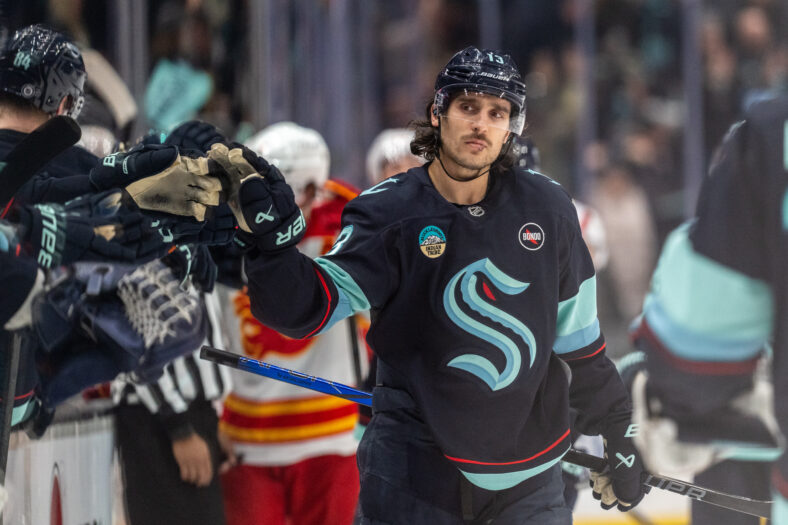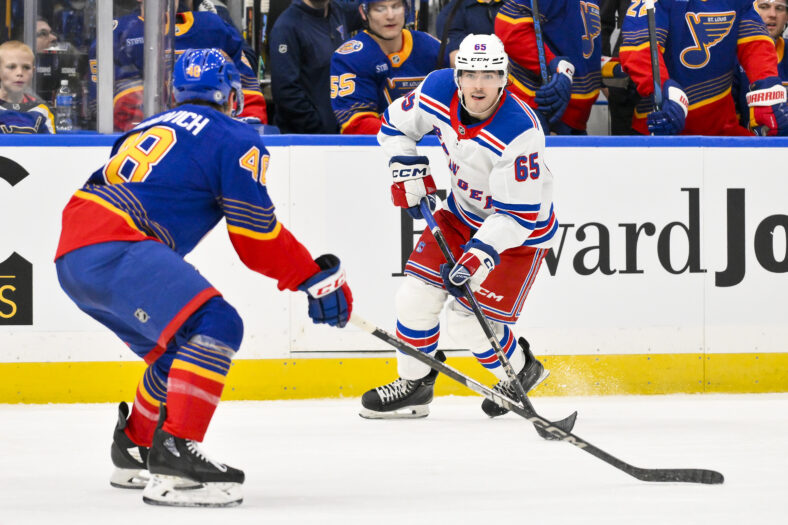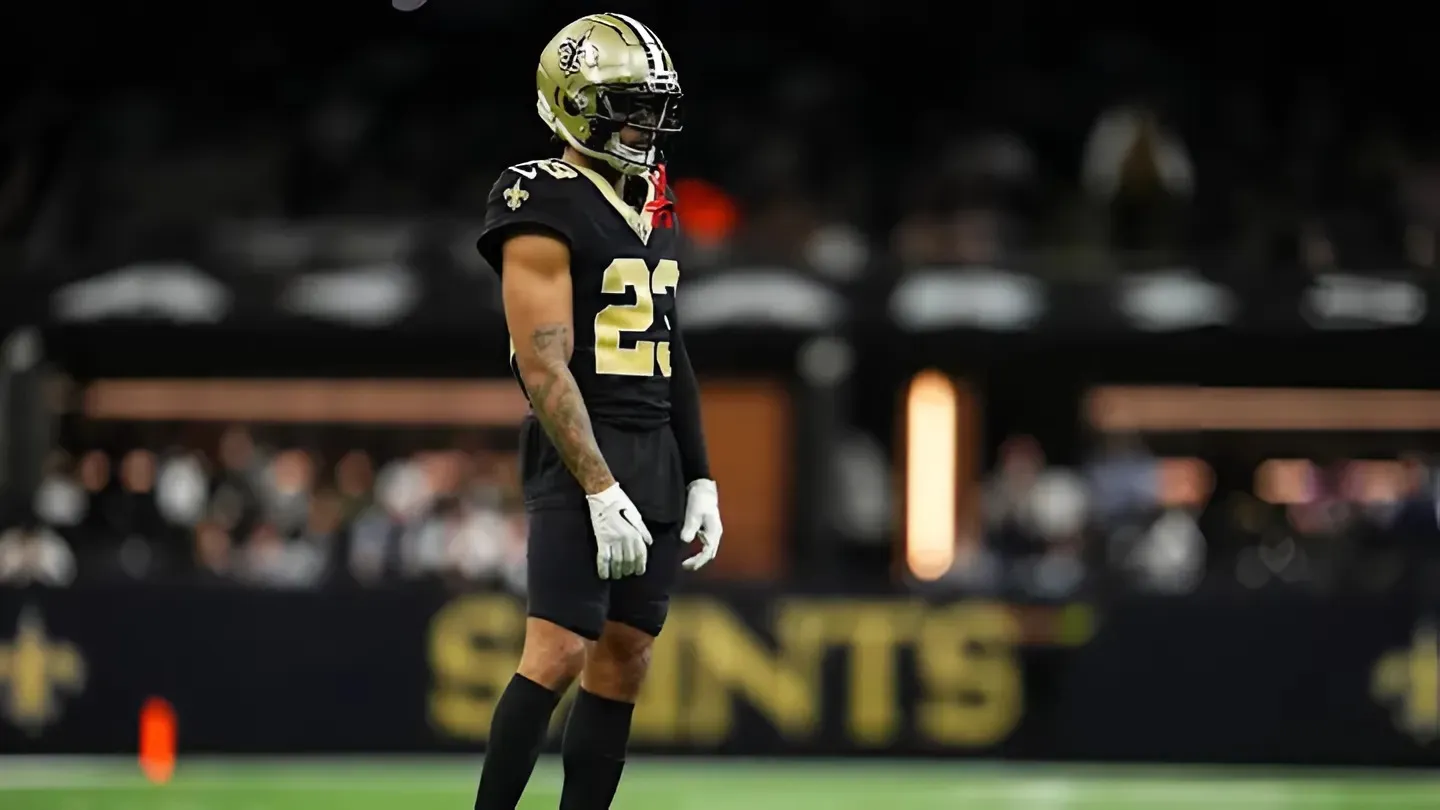So far, J.T. Miller looks to be everything the New York Rangers could have hoped for when they acquired him from the Vancouver Canucks last week. An apparently rejuvenated Mika Zibanejad, who has moved from his usual center spot onto Miller’s right wing, has been an unexpected bonus.

As promising as the Miller-Zibanejad partnership is looking, though, coach Peter Laviolette’s decision to move the former top-line center to a wing spot has created a problem that dogged the Blueshirts last season as well. That’s a lack of depth in the bottom six, a group that is now facing a familiar need: A third-line center who can score, drive possession and defend – a kind of player like Filip Chytil, who headed to the Pacific Northwest in the deal for Miller.
That bottom-six depth took a further hit Tuesday, when the team announced that towering left wing Adam Edstrom will miss 2.5-3.5 months with a lower-body injury. Edstrom’s versatile game had been on the upswing, establishing himself as a stalwart on the club’s Twin Towers fourth line with Matt Rempe.
The Rangers never really solved this dilemma in 2023-24. That team’s top-heavy forward corps appeared to have finally become better balanced when it picked up third-line center Alex Wennberg from the Seattle Kraken ahead of the trade deadline, but by the end of the Rangers playoff run, the bottom six was a mess again. By the Eastern Conference Final, Laviolette was back to experimenting in a futile attempt to find the level of contributions from that group that eluded him throughout 2023-24.
So the search for help in the bottom six, especially for another 3C acquisition, is set to begin anew. Jonny Brodzinski, who drew into the lineup when Zibanejad moved up, is a useful player, but not a long-term third-line center solution for a playoff-hopeful team.
The same goes for veteran penalty-killing specialist Jimmy Vesey, who appears set to take most of Edstrom’s minutes in his absence but doesn’t provide nearly the impact Edstrom does.
So here’s a look at some external candidates (and one internal) that general manager Chris Drury could target leading up to the March 7 trade deadline as the Rangers continue their increasingly frantic quest for the postseason.
Center candidates for Rangers
Radek Faksa, St. Louis Blues

The Blues aren’t out of the Western Conference wild-card race, but they’re not exactly making a charge either. If St. Louis starts to fall out of it, Faksa seems likely to become available. Working on an expiring contract that carries a $3.25 million salary-cap hit, the 31-year-old has had something of a down season in the Gateway City, with just three goals, seven assists and a minus-6 rating.
Faksa, though, brings size (6-foot-3, 215 pounds), a bit of offensive ability and face-off prowess (54.5 percent win rate in 2024-25, 52.0 for his career). He’d in theory be a steady veteran presence and an upgrade over Brodzinski.
Nick Bjugstad and Alex Kerfoot, Utah Hockey Club
The Rangers were rumored to be interested in Bjugstad last season, when he totaled 22 goals and 23 assists in 76 games for the then-Arizona Coyotes. The franchise’s move to Salt Lake City this season seems to have caused his scoring to dry up, since he has only five goals and nine assists in 44 games, along with a minus-7 rating after posting a plus-11 mark in 2023-24.
Perhaps a change of scenery to a contending team would energize the giant (6-6, 209) Bjugstad, who would replace some of the size lost with Edstrom’s injury. Among the more offensively talented candidates the Rangers could acquire to handle 3C duties, Bjugstad, 32, carries a $2.1 million cap hit and becomes an unrestricted free agent July 1.
Kerfoot, 30, can also put the puck in the net, with 186 goals in his eight-season career. He’s a smaller player at 5-11 and 186 pounds, but is a shifty skater with good instincts who pounces on turnovers, throws the body a little, blocks shots and kills penalties. he has an expiring $3.5 million cap hit.
Nico Sturm, San Jose Sharks
Would Drury and his buddy, Sharks GM Mike Grier, engage in some more business this season after Grier mercifully took Barclay Goodrow’s contract off the Rangers hands last summer? At 6-foot-3 and 209 pounds, Sturm plays a physical game and dominates at the face-off dot, having won an NHL career-high 63.7 percent of his draws this season and 56.7 for his career.
Sturm wouldn’t provide much offense, but he approximates the kind of big matchup center the Rangers have craved for years. He’s a strong defensive player and penalty killer, thanks to his ability to win defensive-zone face-offs and use his size and reach to disrupt passing lanes.
At age 29 and carrying an easily-absorbed $2 million cap hit on an expiring contract, Sturm seems as if he’d be a rental for the Rangers before entering free agency seeking multi-year offers July 1.
Forward candidates for Rangers
Brandon Tanev, Seattle Kraken

Tanev would be close to an ideal fit for the Blueshirts – and pretty much every other contender. His mix of moxie (109 hits) and offense (nine goals, seven assists in 52 games; 16 goals two seasons ago) makes Tanev the kind of reinforcement that teams covet for the postseason. The 33-year-old might prove too expensive in a trade for the Rangers, especially given that they’re looking for more of a cheap short-term replacement/insurance policy for Edstrom.
Tanev carries a $3.5 million cap hit that expires this summer, which will make him a popular target ahead of the deadline.
Garnet Hathaway, Philadelphia Flyers
Despite the rarity of trades between the Metropolitan Division rivals, sinking Philadelphia is motivated to clean up its mess of a payroll, as evidenced by the trade of Joel Farabee and Morgan Frost to the Calgary Flames on Jan. 30. Hathaway is yet another Flyers forward with contract term, carrying a $2.375 cap hit this season and $2.4 million for each of the following two seasons.
The odds are against such a swap, but Hathaway, even at age 33, remains one of the most irritating and disruptive pests in the NHL. Like Sturm, he’s the kind of player the Blueshirts have needed in recent postseasons, having found that out themselves firsthand amidst numerous division battles with Hathaway, who also played for the Washington Capitals from 2019-22.
At 6-foot-3 and 208 pounds, Hathaway’s in-your-face approach is just what the Rangers were looking for when they acquired Miller. His ability to score goals, pile up hits (197 in 54 games) and drive opponents crazy would be a perfect fit on the Rangers’ bottom forward unit. His contract might not be.
Liam O’Brien, Utah Hockey Club
There’s more than a little bit of former Madison Square Garden fan favorite Sean Avery in O’Brien, whose fire-and-brimstone approach to playing hockey would inject the Rangers with serious emotion on a nightly basis. O’Brien led the League in penalty minutes last season and piled up 229 hits.
He’s signed for two more years after this one at a desirable $1 million per, but there’s question as to how he’d function playing regularly for a better team.
Brett Berard, Rangers

If Laviolette wants more fourth-line sandpaper in Edstrom’s absence, he could always stay close to home with Berard, who mostly impressed as a straight-line, speedy, sometimes-annoying winger in his 19-game stint on Broadway this season. The 22-year-old scored three goals with four assists while doling out 27 hits before being sent back down to Hartford of the AHL on Jan. 11. The price is right at $867,500, and he wouldn’t cost anything in trade. He needs to get healthy, though. He’s been banged up down in the minors the past few weeks.
-1739498761-q80.webp)


